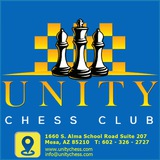And now the entire concept has become clear. The idea is remarkable, both because the pawn structure in the center isn't yet fixed and White could still launch a dangerous counterstrike there, and because the maneuver is also rather slow, taking three moves and with no direct attacking goal. In this particular case, White is unable to come up with anything in the center. In fact, here and on his last move Black could well have opted for . . . d6-d5. After completing his maneuver Black wants to follow up with . . . g5 -g4, undermining White's pawn center, opening the g-file and improving the scope of the Bb7.
So how did Fischer arrive at this idea in the first place? We can only guess, of course, but it's at least perfectly possible that he'd seen the idea before, not in this particular position but maybe in a slightly different situation in a completely different opening. After all, it was known that he avidly studied all published games.
So how did Fischer arrive at this idea in the first place? We can only guess, of course, but it's at least perfectly possible that he'd seen the idea before, not in this particular position but maybe in a slightly different situation in a completely different opening. After all, it was known that he avidly studied all published games.
Game over. Black won after some mutual inaccuracies, presumably in time trouble.
The basic ingredients of the Nievergelt Manoeuvres are already familiar, for instance from Stonewall-like structures.
In that case, however, ...g7-g5 immediately hits the doubled pawn on f4 and threatens to open the g-file. With the true Nievergelt Manoeuvre, you may hope to just create a half-open file in the long run. To refresh your memory - repetition is an important pillar of learning.
In that case, however, ...g7-g5 immediately hits the doubled pawn on f4 and threatens to open the g-file. With the true Nievergelt Manoeuvre, you may hope to just create a half-open file in the long run. To refresh your memory - repetition is an important pillar of learning.
